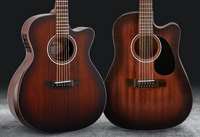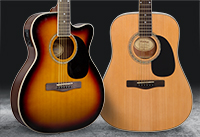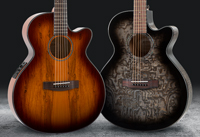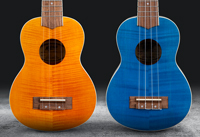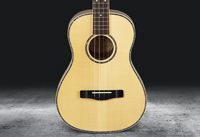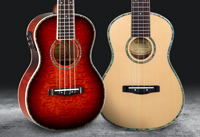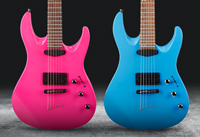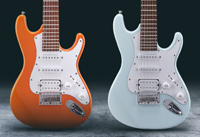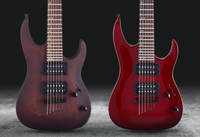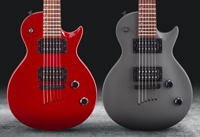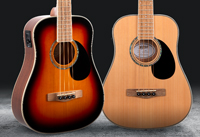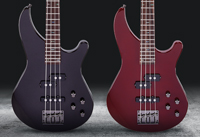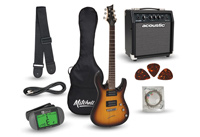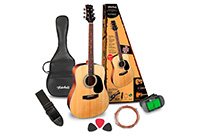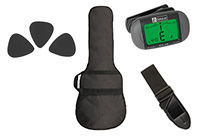Guitar Player Review: Mitchell Guitars HD400 and TD400
Posted 08/30/2017 by Michael Molenda
It’s not often that a guitar manufacturer—at least one bearing models you’d want to check out and play—presents its “top of the line,” and those beauties cost less than $400 (street prices). But Mitchell’s recent foray into the electric field—they’ve offered acoustic guitars for years—was a big play with small pricing. (You can read Dave Hunter’s reviews of Mitchell’s MD400 and MS400 electrics online at guitarplayer.com or in the July 2017 issue of GP.) However, the upper-end Mitchells are far from being simply good lookers at bargain prices that aren’t really viable as working guitars. As with the MD and MS models, the HD400 and TD400 are great values, sure, but they are also serious guitars that won’t falter on stage or in the studio. And, man, they are fun to play.
OVERALL CONSTRUCTION
Built quality for both guitars is impressive for the price. The bolt-on necks are locked-down tightly with no errant spacing in the neck pockets, all hardware is taut (there are no rattles, or loose knobs, and so on), and, for the most part, the finishes are excellent—excepting some minor tooling scratches and paint dappling around the pickup cavities on the HD400. The frets are seated nicely into the fretboard, although the edges are a bit rough, and the abalone dot inlays are perfect.
HD400
Designed as a shred machine, the HD400’s flat, satin-finished neck and its comfy body bevels make it near effortless to play, and the curved detents on the bouts provide easy access to the 24th fret. No speed bumps here!
The Master Volume knob is well positioned for pinky manipulations for swells and dynamic level changes, though the Master Tone is a bit far afield for rapid adjustments on the fly. Intonation is spot-on, and the locking nut and Floyd Rose Double-Locking tremolo ensures a return to pitch even after brutal dive bombs. In fact, I put the HD400 flat on its back and wrenched the tremolo like a yoyo, and the tuning was just a few cents off.
In a live situation, it would have qualified as “in tune.” Tonally, the high-output neck and bridge humbuckers and middle-position single-coil are voiced for clarity and impact—no surprise on a guitar intended for fast runs, intricate riffs, and chugging chords with staccato stops and starts. There’s a bounty of articulate midrange content in all three pickups, and you can even emulate some jazzy lines with the neck humbucker if you knock back the Tone knob and play clean.
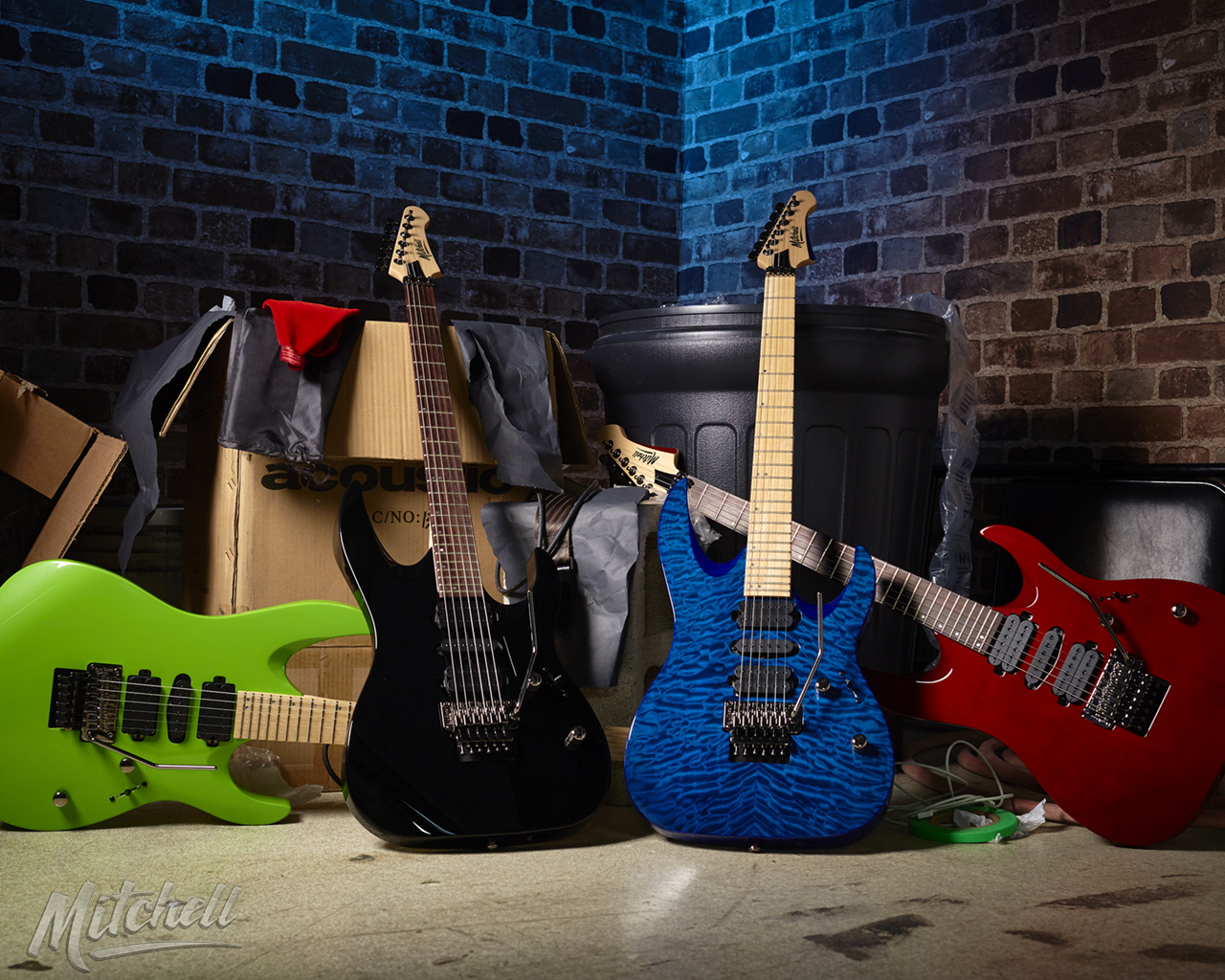
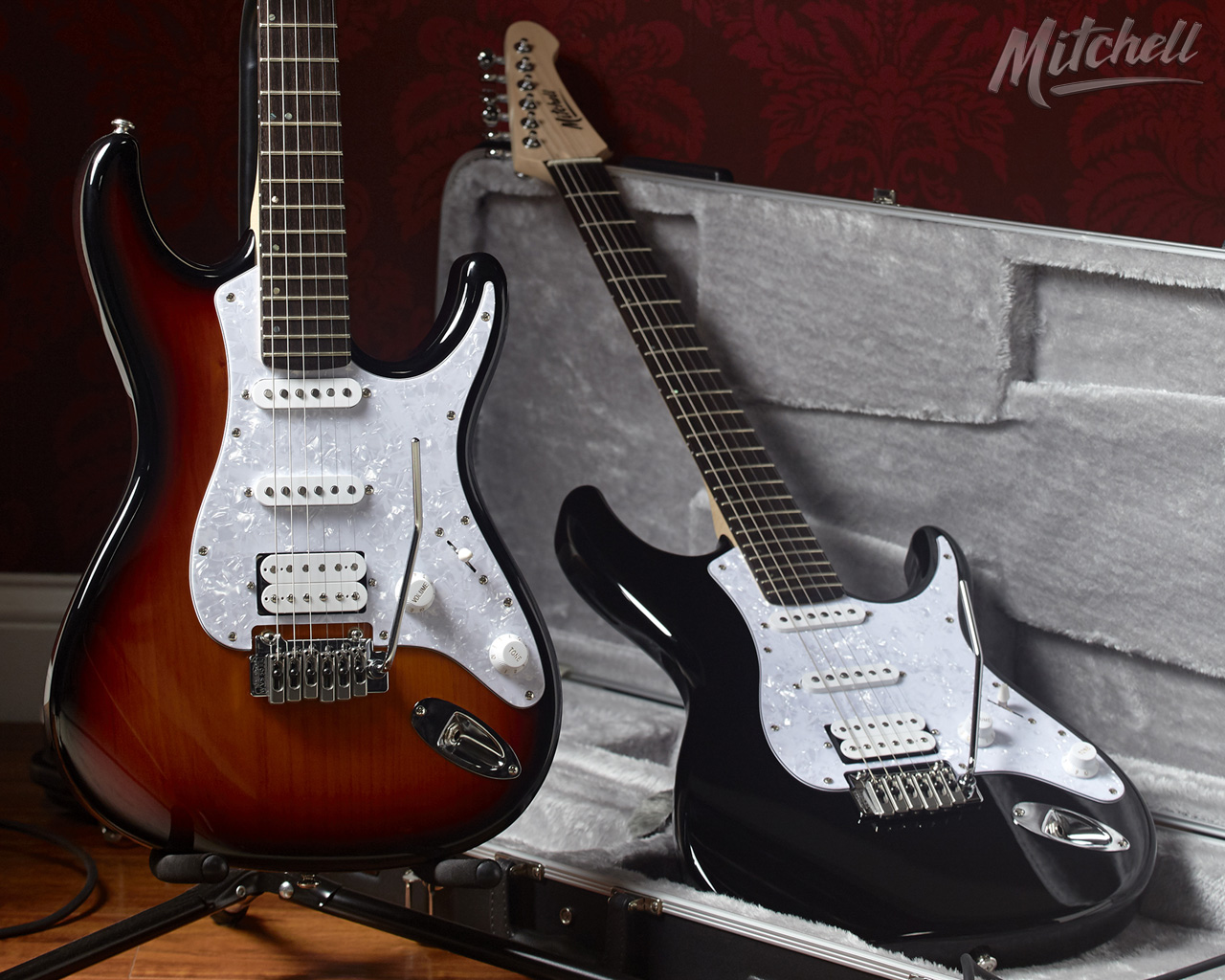
TD400
For more traditional guitarists, the TD400 evokes a more conventional silhouette and a versatile HSS pickup configuration. For the shred-inclined, it doesn’t give much away to its HD400 sibling. The satin neck is super fast, you can get to all 22 frets, and the Wilkinson tremolo is smooth in both directions. You can bring on some tuning “blur” if you get too aggressive with the bar—we’re not locked-down here, kids—but the TD400 maintains pitch and intonation very well during less than Hulk-like abuse.
The neck single-coil produces clear tones with a bit of low-mid muscle, and using the neck and middle single-coils together gives you some great jangle and taut lows. Selecting the coil-tap on the humbucker delivers sparkle and bell-like sheen, and letting the full-on humbucker tone rage in its bridge position is a beautiful thing for stabbing rhythm parts and soaring single-note lines.
A FINAL WORD
Here’s a good tip if you go for either the HD400 or TD400—just keep your mouth shut and play (to paraphrase Frank Zappa). You’ll likely sound great and play great while wielding these guitars, so there’s no reason to discuss price and get into a “budget/value” conversation with other guitarists. Just wow ’em. That’s comment enough in my book.
Guitar Player Review: Mitchell Guitars HD400 and TD400
Posted 08/30/2017 by Michael Molenda
It’s not often that a guitar manufacturer—at least one bearing models you’d want to check out and play—presents its “top of the line,” and those beauties cost less than $400 (street prices). But Mitchell’s recent foray into the electric field—they’ve offered acoustic guitars for years—was a big play with small pricing. (You can read Dave Hunter’s reviews of Mitchell’s MD400 and MS400 electrics online at guitarplayer.com or in the July 2017 issue of GP.) However, the upper-end Mitchells are far from being simply good lookers at bargain prices that aren’t really viable as working guitars. As with the MD and MS models, the HD400 and TD400 are great values, sure, but they are also serious guitars that won’t falter on stage or in the studio. And, man, they are fun to play.
OVERALL CONSTRUCTION
Built quality for both guitars is impressive for the price. The bolt-on necks are locked-down tightly with no errant spacing in the neck pockets, all hardware is taut (there are no rattles, or loose knobs, and so on), and, for the most part, the finishes are excellent—excepting some minor tooling scratches and paint dappling around the pickup cavities on the HD400. The frets are seated nicely into the fretboard, although the edges are a bit rough, and the abalone dot inlays are perfect.

HD400
Designed as a shred machine, the HD400’s flat, satin-finished neck and its comfy body bevels make it near effortless to play, and the curved detents on the bouts provide easy access to the 24th fret. No speed bumps here! The Master Volume knob is well positioned for pinky manipulations for swells and dynamic level changes, though the Master Tone is a bit far afield for rapid adjustments on the fly. Intonation is spot-on, and the locking nut and Floyd Rose Double-Locking tremolo ensures a return to pitch even after brutal dive bombs. In fact, I put the HD400 flat on its back and wrenched the tremolo like a yoyo, and the tuning was just a few cents off. In a live situation, it would have qualified as “in tune.” Tonally, the high-output neck and bridge humbuckers and middle-position single-coil are voiced for clarity and impact—no surprise on a guitar intended for fast runs, intricate riffs, and chugging chords with staccato stops and starts. There’s a bounty of articulate midrange content in all three pickups, and you can even emulate some jazzy lines with the neck humbucker if you knock back the Tone knob and play clean.

TD400
For more traditional guitarists, the TD400 evokes a more conventional silhouette and a versatile HSS pickup configuration. For the shred-inclined, it doesn’t give much away to its HD400 sibling. The satin neck is super fast, you can get to all 22 frets, and the Wilkinson tremolo is smooth in both directions. You can bring on some tuning “blur” if you get too aggressive with the bar—we’re not locked-down here, kids—but the TD400 maintains pitch and intonation very well during less than Hulk-like abuse. The neck single-coil produces clear tones with a bit of low-mid muscle, and using the neck and middle single-coils together gives you some great jangle and taut lows. Selecting the coil-tap on the humbucker delivers sparkle and bell-like sheen, and letting the full-on humbucker tone rage in its bridge position is a beautiful thing for stabbing rhythm parts and soaring single-note lines.
A FINAL WORD
Here’s a good tip if you go for either the HD400 or TD400—just keep your mouth shut and play (to paraphrase Frank Zappa). You’ll likely sound great and play great while wielding these guitars, so there’s no reason to discuss price and get into a “budget/value” conversation with other guitarists. Just wow ’em. That’s comment enough in my book.

